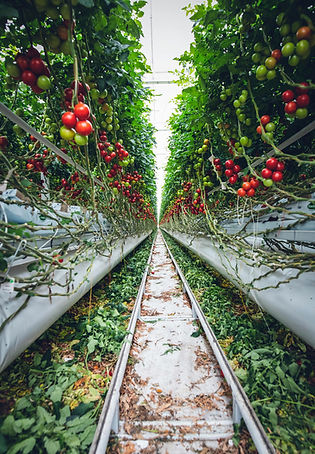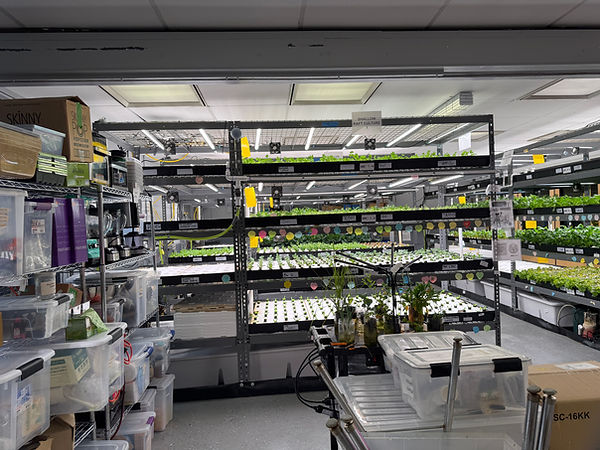
About the Project
This project is part of a student-led civic media project exploring a big question:
Can hydroponics help fight food insecurity?
Created through the Hutchins Student Civic Media Grant from the Hutchins Center for Civics at The Lawrenceville School, this site investigates the power, potential, and limitations of growing food without soil (aka Hydroponics). Through interviews, farm visits, videos, and research, it highlights how hydroponics is being used to grow fresh food in urban spaces, teach students, and help communities.
Whether you’re new to hydroponics or already curious about its impact, this site is designed to inform, inspire, and start conversations about the future of food.

What You'll Learn
Through interviews, site visits, and research, this project explores how hydroponics is being used to make our food systems smarter, more equitable, and more resilient. Below are three key themes you’ll discover as you explore the site.

Education & Youth
Hydroponic farms are transforming cafeterias into science labs. You’ll see how programs like Teens for Food Justice and SHUPP use hands-on growing to teach students about biology, health, and sustainability, while giving them the tools to take on food justice in their own communities.

Access & Equity
Fresh food isn’t always easy to access, especially in underserved and urban neighborhoods. This section explores how hydroponics is being used to grow produce where grocery stores are scarce, and how innovative partnerships are expanding who gets to grow and eat healthy food.

Barriers & Solutions
Hydroponics holds a lot of promise, but it’s not without obstacles. We look at the costs, technical barriers, and policy gaps that can stand in the way, and highlight the creative solutions people are using to overcome them. I'll even be showcasing specific faliures and how they were overcome.

Image from TFFJ Farm NYC
Featured Case Study: Teens For Food Justice
Teens for Food Justice (TFFJ) is a nonprofit turning underused spaces in New York City public schools into thriving hydroponic farms. Their model goes beyond just growing food as it encourages students to take the lead in addressing food insecurity, climate change, and health disparities in their communities.
At TFFJ’s MLK Educational Campus farm, students grow thousands of pounds of leafy greens each year. They manage every step of the process, from planting to harvesting, while also learning nutrition, science, and food systems. It’s a great example of how hydroponics can be both a teaching tool and a local solution to food injustice.
Popular Questions
Hydroponics FAQ
Q1: What exactly is hydroponics?
Growing plants without soil, using water-based nutrient solutions. Plants are supported by a growing medium like coconut coir or clay pellets and get everything they need through their roots.
Q2: Is hydroponic farming better than traditional farming?
It depends, but hydroponics uses less water, grows faster and can be done indoors or in urban spaces, so it’s a powerful tool where land or resources are limited.
Q3: Can hydroponics really help fight food insecurity?
Yes. Hydroponics can bring fresh food into underserved communities, especially food deserts, while reducing transportation costs and empowering local growers.
Q4: Isn’t hydroponics expensive to set up?
Start up costs can be high, but many nonprofits, schools and startups are finding ways to scale affordably. Over time hydroponics can become more efficient and cost effective.
Q5: Who is using hydroponics right now?
Schools, nonprofit farms, urban growers, restaurants, startups and even individuals are using hydroponics in creative ways, from rooftops in NYC to classrooms in rural towns.

Meet the Creator
My name is Gabriel Vermut, and I’m a student at The Lawrenceville School with a strong interest in agriculture, STEM, and civic engagement. I’ve worked on my school’s farm, founded the Big Red Farm Club, and built hydroponic systems both at school and at home. I also researched plant-microbe interactions as part of the Princeton Laboratory Learning Program at Princeton University.
This website is my project for the Hutchins Center for Civics’ Civic Media Grant. It explores the question: Can hydroponics help fight food insecurity? Through interviews, research, and firsthand visits, I’ve aimed to present a clear, honest look at what hydroponics can and can’t do. I hope you learn something new.


